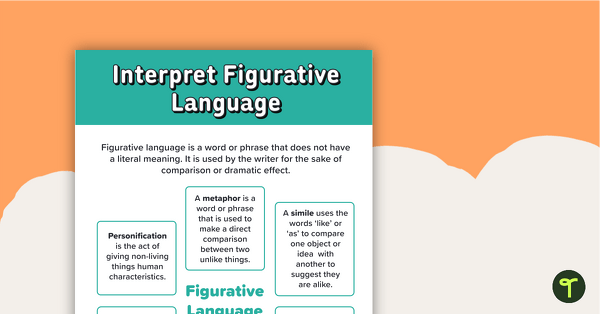Provide students with a visual reminder of the types of figurative language with this classroom display poster.
What Are Examples of Figurative Language?
Figurative language is language that does not have a literal meaning. It is used by the writer for the sake of comparison or dramatic effect. This can make figurative language a challenging concept for our students to get their heads around! (And there’s an example of an idiom right there!)
Display this educational poster in your classroom when exploring the wonderful world of figurative language with your students. It explains some of the more common forms of figurative language in student-friendly terms. The following types of figurative language are explained on the poster:
- A metaphor is a word or phrase that is used to make a direct comparison between two, unlike things.
- A simile uses the words ‘like’ or ‘as’ to compare one object or idea with another to suggest they are alike.
- Onomatopoeia is the use of words that imitate the sounds associated with the objects or actions they refer to.
- Idioms are words, phrases or expressions that cannot be taken literally.
- Alliteration is the repetition of the same or similar kinds of sounds at the beginning of words or in stressed syllables.
- Personification is the act of giving non-living things human characteristics.
How to Make the Most of Our Figurative Language Poster
This poster has been created to support literacy instruction in your classroom. You may wish to use it in the following ways:
- Print the poster on A3 paper and display it in your classroom as a reminder of the various types of figurative language.
- As you teach figurative language, provide students with a smaller version of the poster to paste into their workbooks.
- Use the resource as a word wall display by adding examples of each type of figurative language around the poster.
Easily Download and Print
This resource downloads as a full-colour PDF. Download, print and teach!




0 Comments
Write a review to help other teachers and parents like yourself. If you'd like to request a change to this resource, or report an error, select the corresponding tab above.